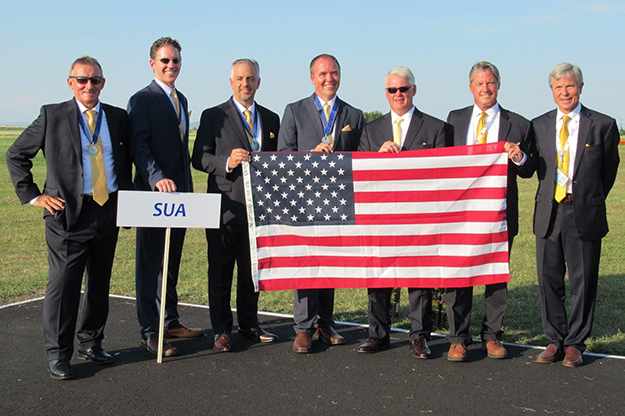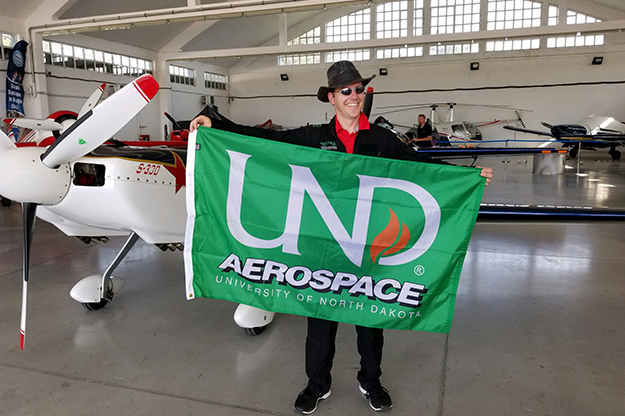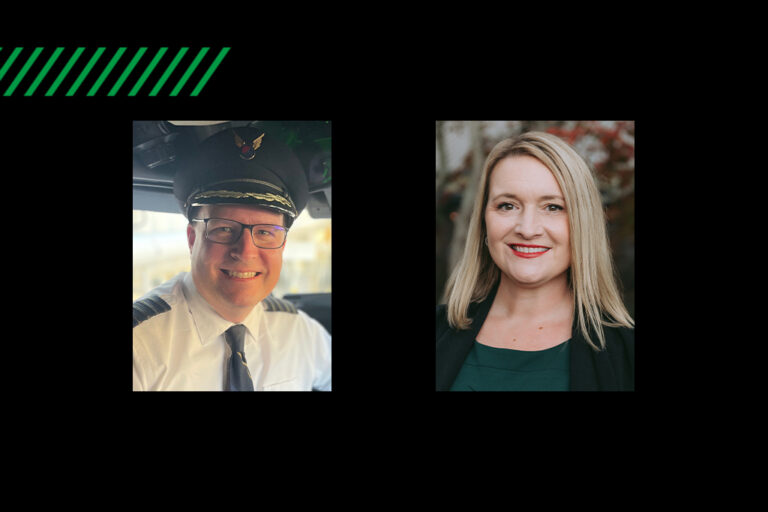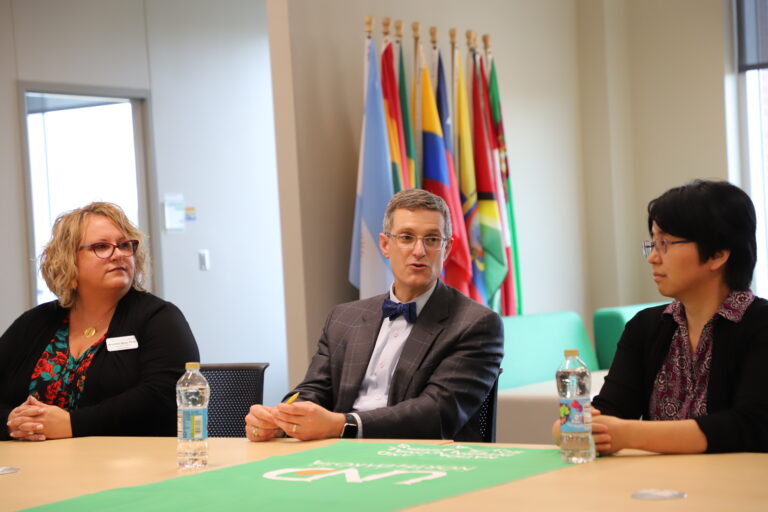High flying on a hair-raising stage
UND aerobatics pilot Mike Lents earns top marks for Team USA in silver-medal finish at World championships

Over his decade-plus presence at UND, Michael Lents has learned to lead from the front.
“I want to push my students to the best of their ability, but I want to be able to tell them what’s happening from experience,” he said.
He just had the experience of a lifetime in competitive aerobatics – leading the U.S. team to a second-place finish at the World Advanced Aerobatic Championships in Ploiesti, Romania.
Lents — a master certified flight instructor and assistant professor and collegiate aerobatics coach at UND — placed fifth overall among the world’s best pilots.
“It’s been an amazing ride,” he said. “I haven’t sat and thought too hard about it, but it’s cool being able to take it home for the team, country and sport.”

Work without working
After a rigorous week of strategy, preparation and sustained g-forces, Lents had little time to get back to his Ryan Hall office, on the UND campus, for fall semester classes at the John D. Odegard School of Aerospace Sciences.
It’s quite the transition from high-flying on the global stage to guiding aviation students through their first spins. For Lents, it’s exactly where he wants to be.
“When people ask about my future ambitions, why I don’t use my credentials to work with an airline, I always end up explaining what I do,” he said.
Lents teaches ground school – the basics of flight instruction, as well as a human factors class and the introduction to aerobatics elective. He’s the head coach of the wildly successful UND Aerobatics Team, which has netted nine consecutive first-place finishes at the International Aerobatic Club Collegiate National Championship from 2008-2016. The team placed second last season.
“Once I describe this stuff to engineers and professional pilots they say, ‘You really don’t work, do you?’” Lents answers, “No, I enjoy it all… Then those people ask when I’m leaving so they can have my job.”
Camaraderie in competition
With 10 teams of pilots flying in four different routines, the U.S. delegation ended up being the team to watch. Because of the competition’s format, typically the top teams become inspiration for creating sequences of spins, flips and other feats of aerobatic excellence.
Lents credited his coach with creating sequences that worked well for the individual pilots trying to finish first and for the team representing the nation.
“Because it is an individual sport,” Lents said. “But, when you operate as a team, you’re supporting each other. With that mindset, you don’t mind landing and telling your teammate, who is also your competitor, the ways in which they’re going to beat you. The stresses, successes, failures – we share that load. That hasn’t always been the case at higher levels until recently.”
For the fourth and final program, Lents was the last pilot to fly. He knew the scoreboard and what he had to do to secure a high place. As he tried to take his mind off the numbers, teammate, Matt Dunfee, cracked a joke.
“The hopes, dreams and fate of a nation rest on your shoulders — Good luck,” he quipped.
Lents proceeded to fly his highest-scoring run of the competition.

Flying over Europe
Behind his desk, there isn’t enough room for another trophy. He claims a proper case is in the works before pulling his newest silver medal from a still-packed bag. He also unfolds a Kelly green UND flag; the lettering is filled with signatures and notes from the competition’s 58 pilots.
“The French wrote, ‘Good job, cowboys,’ which was pretty great,” Lents remarked.
There also are comments and well-wishes from Great Britain, Russia, Belarus, Australia and more.
It was Lents’ first trip to Europe, which he experienced in a unique way. The craft he used for competition, a PANZL S330, was shipped to the Czech Republic by boat and truck. Once reconstructed, he flew five hours to Ploiesti, a city located to the north of Romania’s capital of Bucharest.
“We flew at lower altitudes and cruised through mountain passes – it was cool,” he said, noting he flew in formation with members of the U.S. team. “You’d look down and see castles, but no break in the forest for roads.”
While in Romania, he was able to visit historical sites such as Peles Castle and the famed Bran Castle of Dracula lore. Lents enjoyed the new adventures that come with travel: food, entertainment and people.
“It was a great experience,” he said.
Life lessons
For Lents, each aerobatic flight is a new experience and each maneuver has its nuances and challenges. He passes those lessons on to students at UND.
He says in the aviation industry, people are starting to look for pilots that are flexible, good aviators with skills in unusual situations. There’s an increased interest in aerobatic flying and all-attitude flight training.
“I compare it to learning how to drive in winter weather,” Lents said. “My dad took me to a local college parking lot during a blizzard and we spun doughnuts in a van. It wasn’t to do doughnuts, but when things go sideways it isn’t the first time I’ve seen it. I know what to do and know the feel of the machine as it reaches the edge.”
Aerobatic flying is about pushing the envelope for both the machine and pilot, but safety is top priority. While upper echelons of competition happen in a single-seat craft, Lents takes a backseat to ensure the safety of student competitors. Violations of safety protocol result in disqualification.
“I mean, I want to go home at night,” he laughed.



